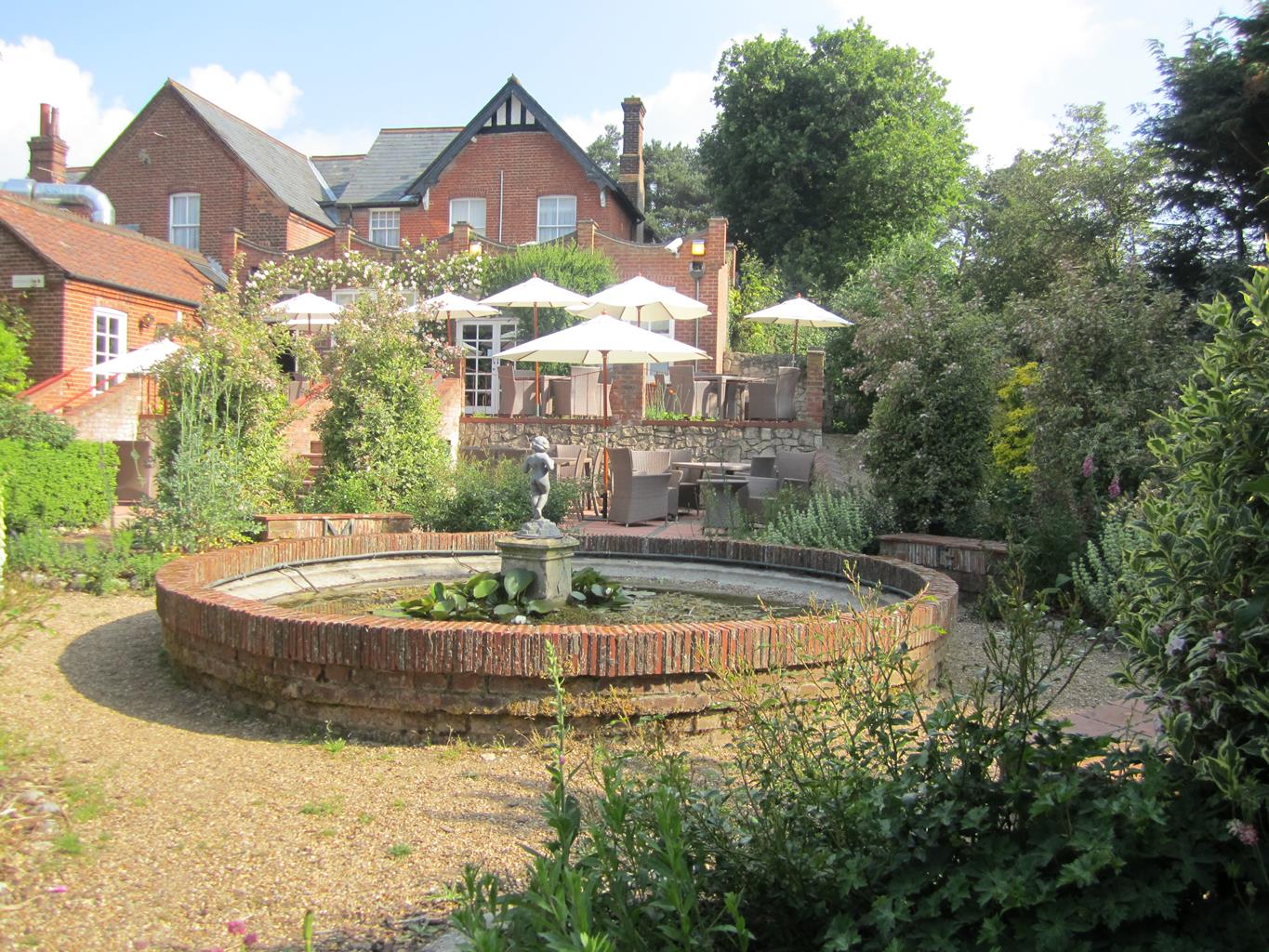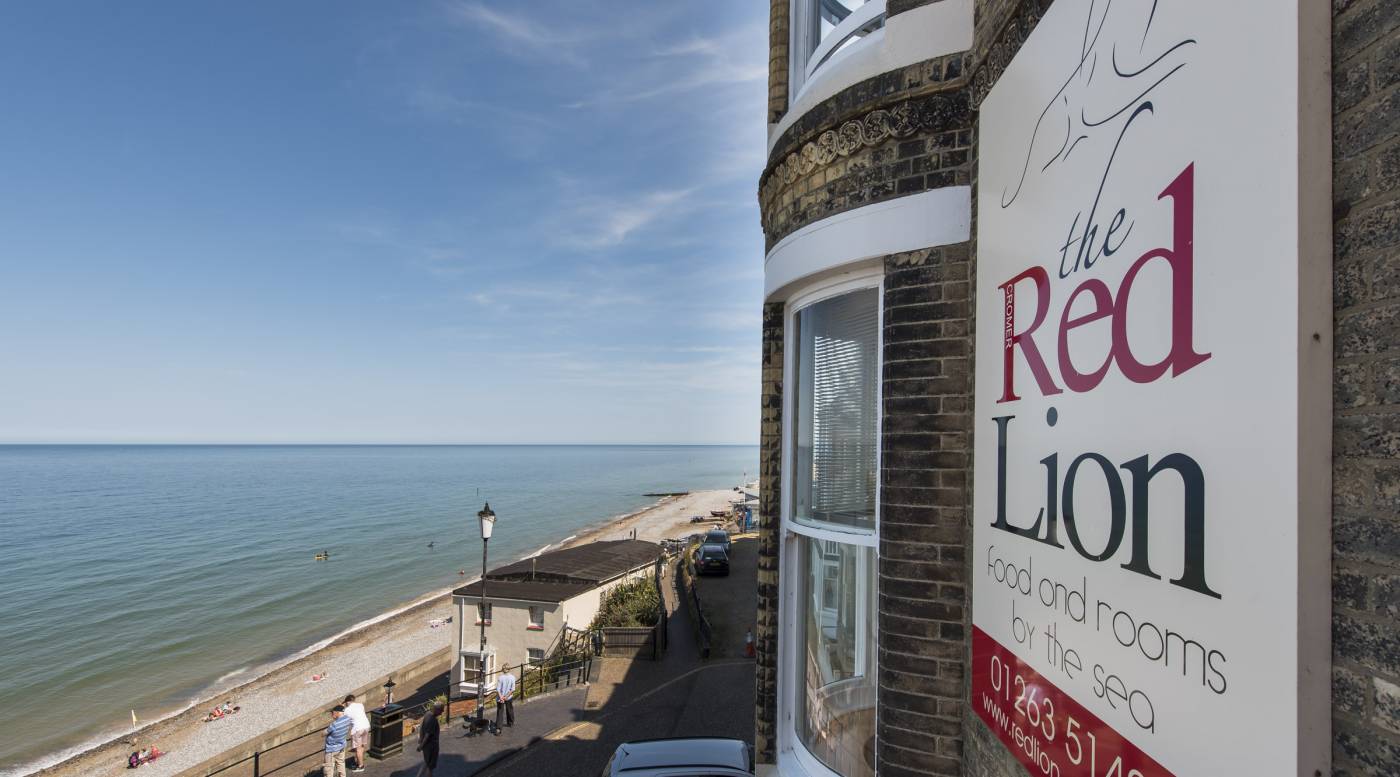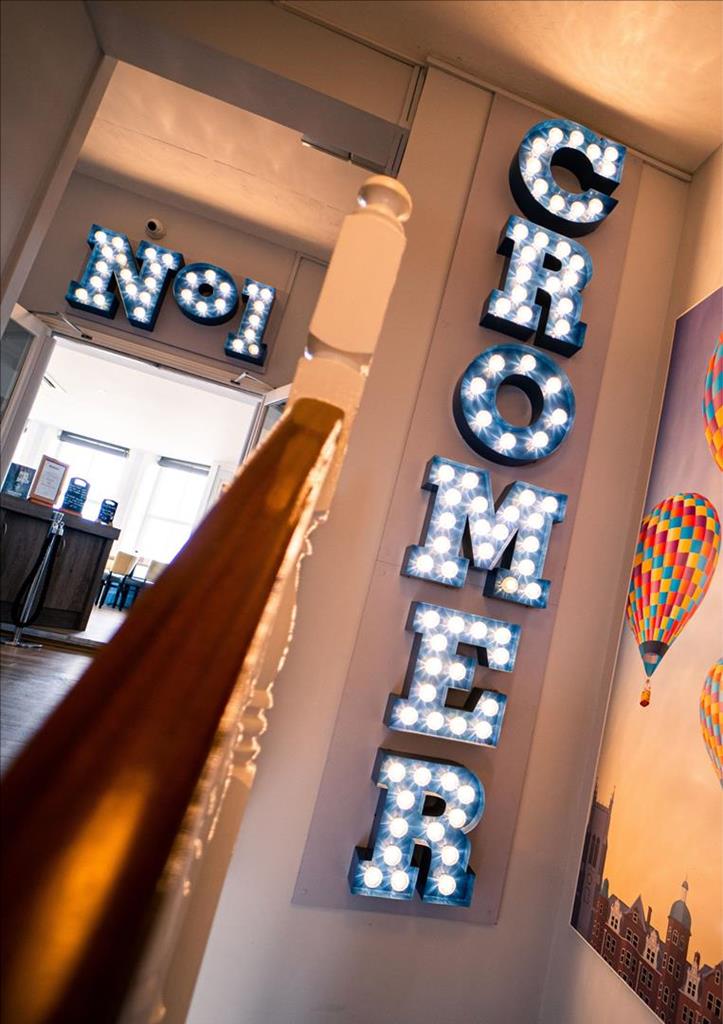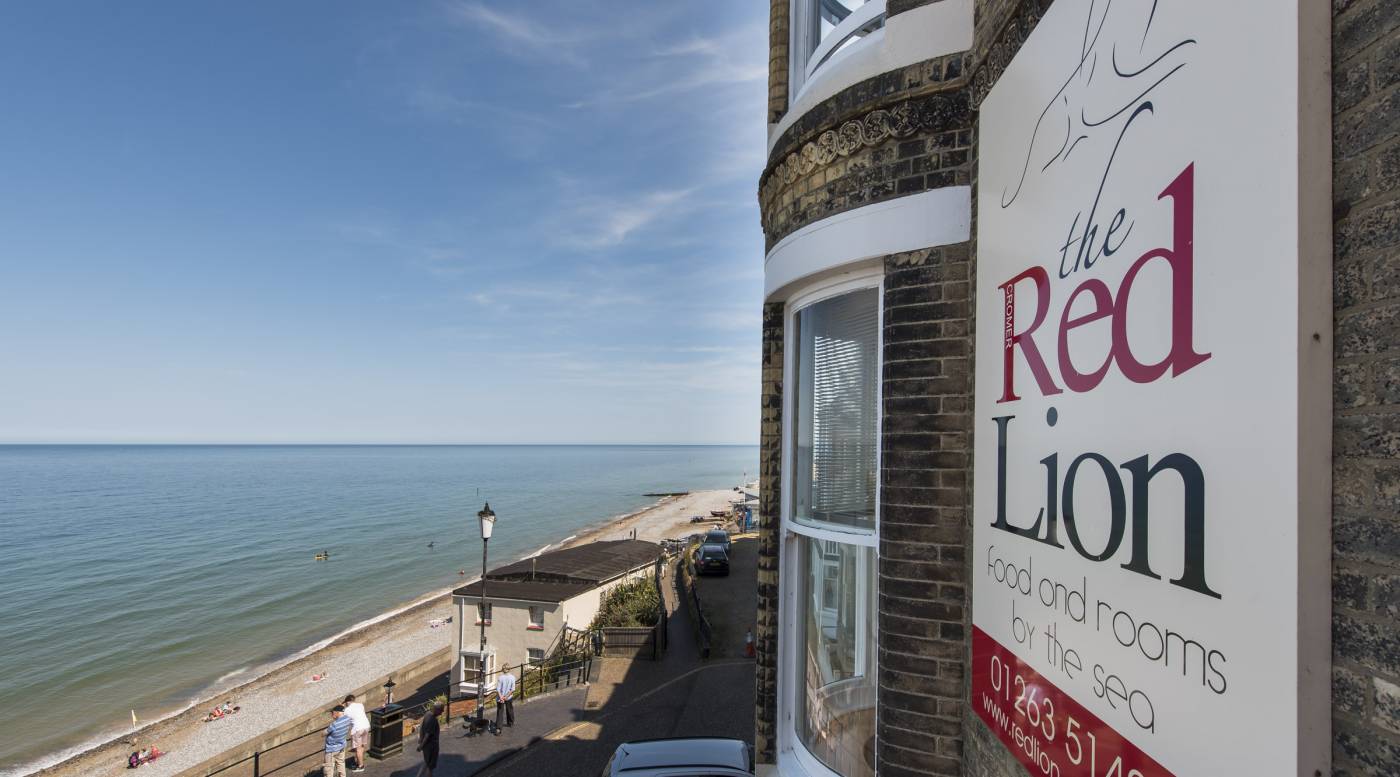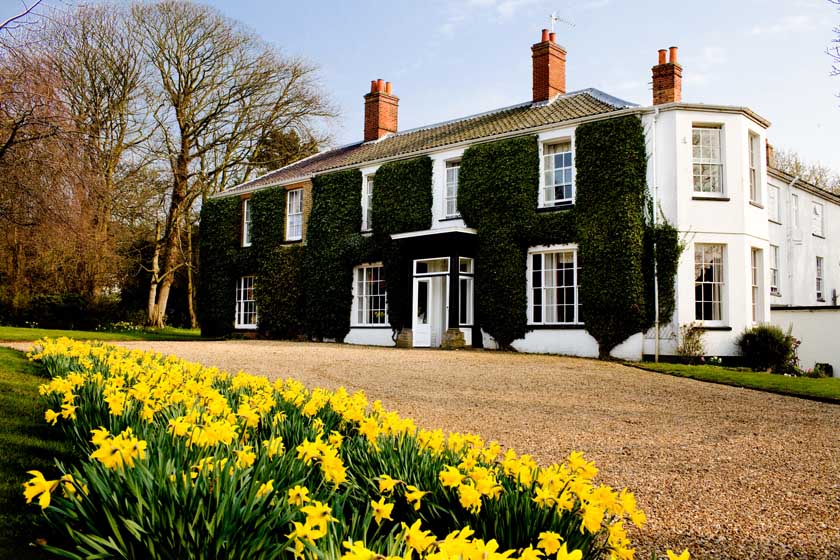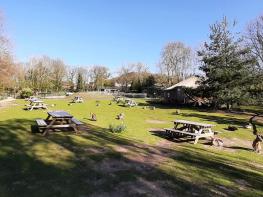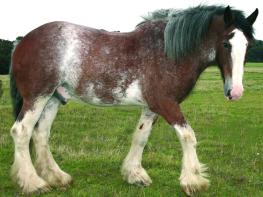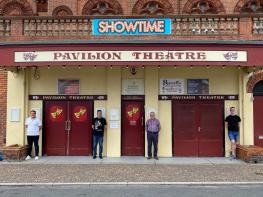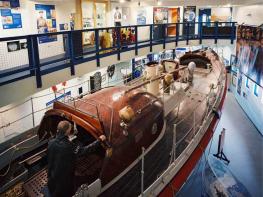Relax & enjoy the ambiance & atmosphere of Molly's Cottage. Built in 2006 it still has…
Metton and the Felbrigg Estate

6.75 miles (10.9kms)
About the walk
Some families gave their name to a place while others took what was already there, which is what happened at Felbrigg. The name, which has Scandinavian origins, was adopted by the Bigods, a Norman family who had fought alongside William when he landed at Hastings in 1066. For his services, Roger Bigod was rewarded with several manors in East Anglia, including Felbrigg, at one time one of the largest estates in Norfolk.
The Wyndham era
Subsequently, the estate became associated with the Wyndhams, when it was bought by John Wyndham in the 15th century. The present house dates from the early 17th century, when Thomas Windham began the splendid Jacobean south front after he had inherited the estate in 1599. Subsequent generations contributed to its gradual evolution with the west wing, and then refurbishments in the 18th century by William Windham II, which were influenced by his Grand Tour in 1741. It was during the 19th century that things began to go wrong when the estate fell to William Fredrick. A naïve eccentric, he ran up insurmountable debts and the estate was eventually sold in 1863 to John Ketton, a Norwich merchant. However, by the First World War, the house was falling into decay.
A new beginning
In 1924, it passed to his great nephew, Wyndham Cremer. As a condition of acceptance, he was obliged to adopt the Ketton name and became Windham Ketton-Cremer. He began the task of restoration, a baton taken on by his second son Robert Windham Ketton-Cremer, an historian and writer. He did much to preserve the house and gardens, including the establishment of the Victory V plantation, which commemorates his elder brother, killed during the Second World War in Crete. Robert never married and left the house to the National Trust in 1969.
Three churches
Each of the churches passed along the way also has something of interest to see. That at Sustead has a round tower, originally Saxon and inaccessible from the church. Within the church is a 17th-century 'wineglass' pulpit decorated with the carved heads of angels, and a brightly painted roof above the chancel. There are colourful Victorian and Art Nouveau windows, as well as fragments of medieval glass depicting St Katherine and St Mary.
St Andrew's at Metton has a square tower, but that too is separated from the church, this time by a covered passage, supposedly created to allow the congregation to process around the church. An unusual relic displayed inside is the village policeman's truncheon, which dates from the 1830s.
Dedicated to St Margaret, Felbrigg church now stands in isolation at the edge of the park. The village that once surrounded it has long gone, its population having been taken by the plague. Inside are 18th-century box pews and around the walls are impressive funerary monuments to various Windhams. The real treasures, however, are scattered about the floor, protected by carpets from the tramp of visitors; engraved brasses, commemorating the successive generations of de Felbriggs who held the estate.
Walk directions
Follow the track beyond the western end of the car park through a gate marked 'Farm and Estate Vehicles'. Fork left past the southern front of Felbrigg Hall. As the carriage drive rejoins, turn off left on a grass path, keeping left where it then splits.
Through a gate at the edge of the park, go left on a contained path, soon swinging right above Felbrigg Pond. Bear left across a meadow and continue through trees beside the water. At the foot of the lake, turn right, keeping right again at a fork along the Weavers' Way.
Emerging onto a lane, go right, but leave left just before a junction along a byway track. Meeting another lane, walk left. After 650yds (594m), turn off left opposite a junction and head out across successive fields, eventually reaching a junction of paths behind a church. The way lies to the left, but first go right to look at Sustead church.
Return to the junction behind the churchyard and now keep ahead. Maintain your heading across a small meadow and another field to reach a lane. Cross to a gap opposite and turn right along the field edge. Towards the far end, dogleg left and right around an injutting corner, then drop right to continue beside the adjacent field.
Meeting another lane, go right. After 200yds (183m), take a track off left to Glen Farm House. Enter the yard, but part way through, watch for Weavers' Way signs directing you left and then right onto a contained path behind trees. Over a stile, walk left beside a rough field, staying forward beyond the hedge corner. At a junction of paths, go left to the top corner and keep left to continue by the left edge of the next field. At the top, climb steps and then turn right along the bottom boundary. Swing left within the corner and carry on beside the hedge. At the top, wind left and right and follow the ongoing track to Metton.
Cross the road by the church to a stile opposite and walk beside a small cemetery. Keep ahead across a couple of meadows and then a large field, continuing beside a wood into the top corner of the field. Follow the track ahead into the wood and maintain the same direction beyond across another large field. Emerging at a junction of tracks, take the one ahead for 0.25 mile (400m) before leaving through a gate on the left. Follow the left fence to Felbrigg church.
Leave the far side of the churchyard below the church tower and bear right. After 200yds (183m) at a waypost, fork right across the park back to the car park.
Additional information
Field paths and tracks
Parkland and wooded farmland
<p>Dogs under control and on leads near livestock</p>
OS Explorer 252 Norfolk Coast East
<p>National Trust pay and display car park at Felbrigg Hall</p>
<p>At Felbrigg Hall</p>
WALKING IN SAFETY
Read our tips to look after yourself and the environment when following this walk.
Find out more
Also in the area
About the area
Discover Norfolk
The North Norfolk Coast is designated an Area of Outstanding Natural Beauty and probably the finest of its kind in Europe. Here you’ll find a string of quaint villages and small towns – Holkham, Wells-next-the-Sea and Cley next the Sea are 21st-century favourites, while Sheringham and Cromer are classic examples of a good old-fashioned seaside resort where grand Victorian hotels look out to sea. Further round the coast you'll find Great Yarmouth, one of the most popular resorts in the UK and packed full of amusements, shops and seashore entertainment. And let's not forget Norwich, the region's only city.
Norfolk prides itself on its wealth of historic houses, the most famous being Sandringham, where Her Majesty the Queen and her family spend Christmas. Many of Norfolk’s towns have a particular charm and a strong sense of community. The quiet market towns of Fakenham and Swaffham are prime examples, as well as Thetford, with its popular museum focusing on the TV comedy series Dad’s Army which was filmed in the area.
Nearby stays
Restaurants and Pubs
Nearby experiences
Recommended things to do
Why choose Rated Trips?
Your trusted guide to rated places across the UK
The best coverage
Discover more than 15,000 professionally rated places to stay, eat and visit from across the UK and Ireland.
Quality assured
Choose a place to stay safe in the knowledge that it has been expertly assessed by trained assessors.
Plan your next trip
Search by location or the type of place you're visiting to find your next ideal holiday experience.
Travel inspiration
Read our articles, city guides and recommended things to do for inspiration. We're here to help you explore the UK.

